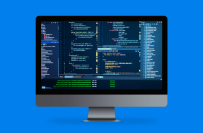与 Ava 聊天 - 您的人工智能业务顾问
大家好,我是 Ava,您的 AI 指南,可帮助您增强业务!
无论您已经在经营一家企业还是梦想创办一家企业,我们都会用AI赋能威客帮助您将愿景变为现实。分享您的业务目标,我们将共同创建一个项目,供我们才华横溢的威客竞标。让我们让您的愿景成为现实!
我已经有一份事业
我要创业
将对话发送到您的电子邮件时出现问题。请稍后再试。
您每小时只能保存一次对话。请稍后再试。
你们的谈话太短了。继续与 Ava 聊天以启用保存功能。
How to use freelancers effectively
Hiring freelancers for a project can save you time and money, but it's important to understand how to get the best results
2019年12月16日 • 阅读需4分钟

Content Manager at Freelancer.com
复制到剪切板失败,请修改权限后重试。
复制到剪贴板。

The step-by-step process to getting great work from freelancers
Sure, we're a bit biased, but we've been consistently vocal about the benefits of using a distributed workforce to help scale your startup. You can hire incredibly skilled people without being bound to the geographic location of your office. You can hire for specific projects without committing to onboarding a full-time employee. And you
But to get the best results, it's important to understand how to hire and manage freelancers effectively.
How to hire
Write a clear brief
Hiring a freelancer starts with writing a project brief. Your project brief outlines the work you need done, and the skills required to do the work. If you want to find the right freelancer for the job, a thorough project brief is your best asset.
Successful projects start with a clear set of instructions. Lay out details like your deadline, your budget, your objectives and any other requirements. It also helps to explain a bit about your business. This gives freelancers context to better understand your project and how it fits into your business strategy.
Review bids
After you post your project, you should start receiving bids within seconds. It's exciting, but it can also be a bit overwhelming if you don't know how to sort through them effectively.
When you're looking through bids, the first detail to look for is freelancers who've read your project brief. This should be obvious when you glance at the bids coming in. A freelancer who's paid attention to the brief will address your project requirements in their bid. This is a great way to narrow down your pool of freelancers. Those who've taken the time to write a bid specifically addressing your project brief and explaining how their experience matches your requirements deserve a closer look.
Review profiles
Once you've narrowed down your pool of freelancers to those who addressed your project brief, who have relevant skills and experience and who fit your budget, it's time to review their profiles.
A freelancer's profile will give you a number of insights. On their profile, you'll be able to see their skills, as well as their past performance. You'll be able to see the number of jobs they've completed on time and on budget, as well as their rehire rate.
You'll also be able to see their average star rating, as well as how many reviews they've received. You can even read past reviews to see the experience others have had working with them.
Depending on the skill you're hiring for, the freelancer may also have a portfolio you can browse through. If they do have a portfolio of past work, look through it to see if it aligns with the style you're looking for.
Onboarding your freelancer
Once you've chosen a freelancer to award your project to, it's time to onboard them.
You'll onboard your freelancer much like you would a new employee. Share with them any information that gives them better context for the project. This could include your company values, your business strategy, your branding guidelines or any other information that would be helpful.
You'll also want to break your project up into smaller stages, or milestones. This allows you to track the quality of your freelancer's work as the project progresses. Have clear deliverables at every milestone, and release portions of the total payment as each milestone is completed.
The initial milestone should be a small portion of your total project, perhaps 5–10%. Setting an early milestone helps to ensure you and your freelancer are on the same page before they've done too much work. If you find you aren't, it's much easier for them to reverse course if they've only completed a small portion of the project.
You can set subsequent milestones at later stages of the project, such as 25%, 50% and then project completion.
Think about your hiring options
When you're getting a project done on Freelancer, you have a number of options. First, you can choose between posting a project and posting a contest . Here's how to know which to choose:
Post a project if …
You have a specific outcome in mind and know the skills required to achieve it. You can either hire a specific freelancer or a smaller team to deliver exactly what you request. Projects allow you to post highly detailed task.
Post a contest if …
You want to be inspired with ideas, whether it's for a design or a prototype. Simply outline your requirement, and tens to hundreds of freelancers will submit entries of their completed work. This allows you to browse through the completed projects and choose the one you like best.
Because of the highly competitive nature of contests, they work best for low complexity tasks that can be completed in a short amount of time. Once you've chosen a winner, you can further refine the concept by hiring the freelancer for a more detailed project.
Get help hiring
If you're not quite sure how to choose a freelancer, or you think your project might need a number of different freelancers, think about enlisting the aid of a Recruiter or a Technical Co-Pilot .
Recruiters can help find the perfect freelancers for your project. Simply tell them your requirements and they'll source the best talent for you. Recruiters have a list of trusted freelancers to draw from, and understand which freelancers are best suited to specific project requirements.
A Technical Co-Pilot can completely manage your project for you. They'll source your freelancers, have a technical background and even supervise them to ensure the project is completed to your exact requirements. So all you have to do is sit back and wait for your masterpiece to be delivered.
Conclusion
No matter what sort of work you need done, hiring a freelancer is a great solution. It helps you take on projects that would be out of reach for many entrepreneurs and early stage startups, and you only pay for the actual work produced. If you understand how to select, hire and manage freelancers, you can unlock enormous potential to scale your business.
与我们的Technical Co-Pilots进行沟通来获得项目帮助
专为您推荐的文章

The climate for startups has been red hot in 2019, and these five industries are shaping up to be huge in 2020.
5 min read

These resources will help you run your startup most efficiently
8 min read

Learn the complete end-to-end process of building a successful website for your business in our comprehensive guide
19 min read

Tesla's Elon Musk was left embarrassed when his live product demo went awry, but he's not the first
4 min read
谢谢!我们已通过电子邮件向您发送了索取免费积分的链接。
发送电子邮件时出现问题。请再试一次。
加载预览
授予地理位置权限。
您的登录会话已过期而且您已经登出,请再次登录。






















